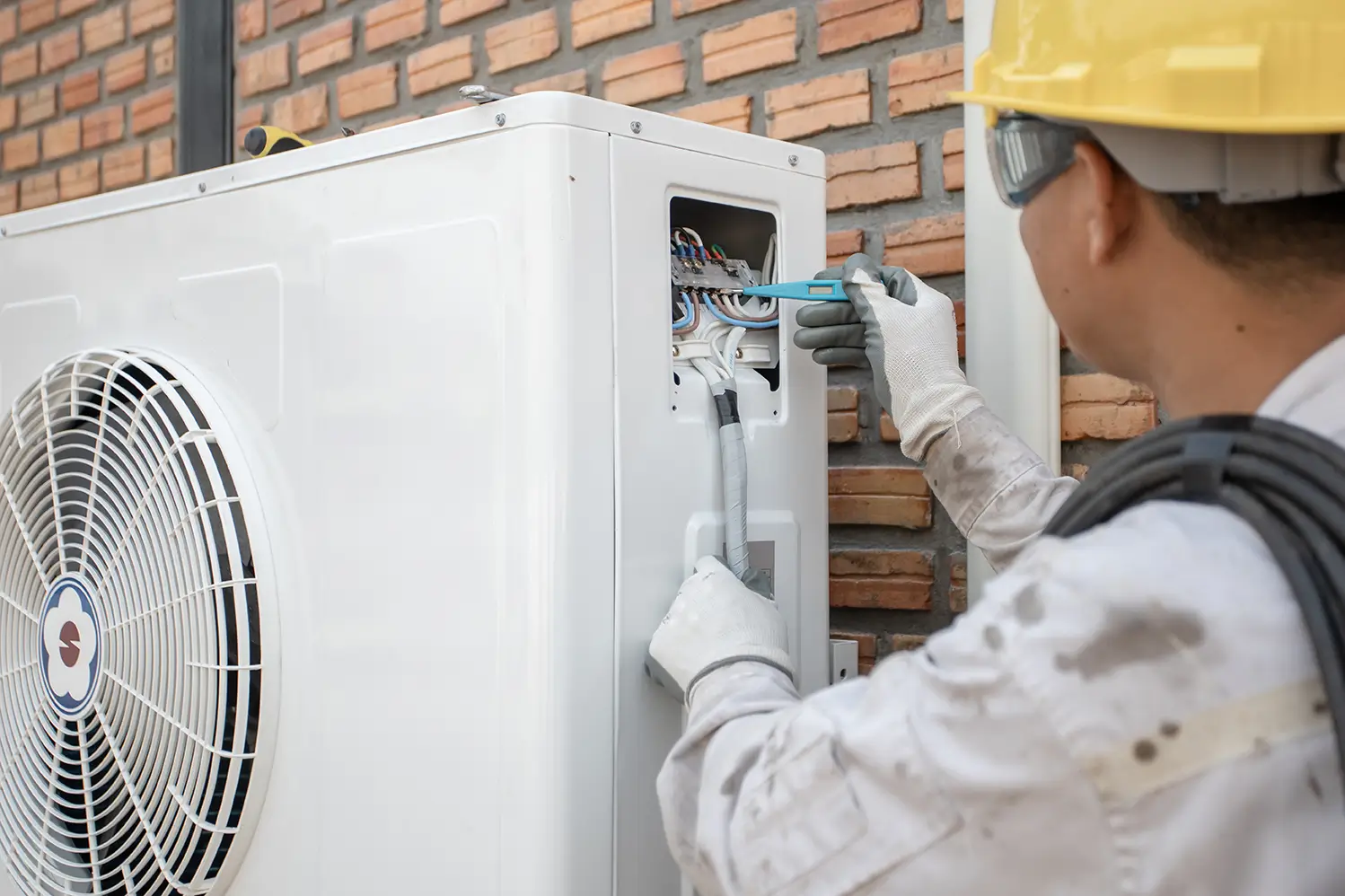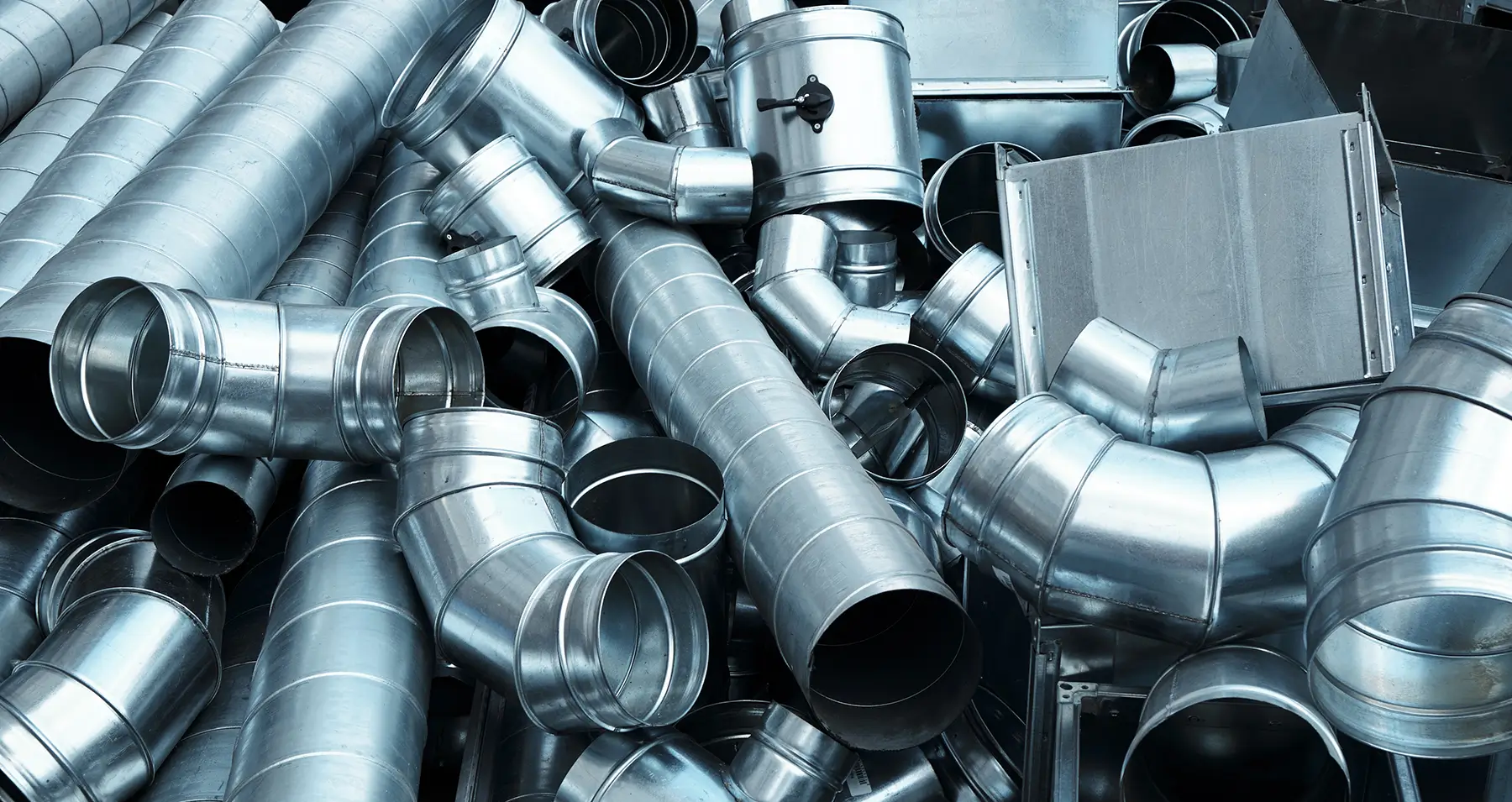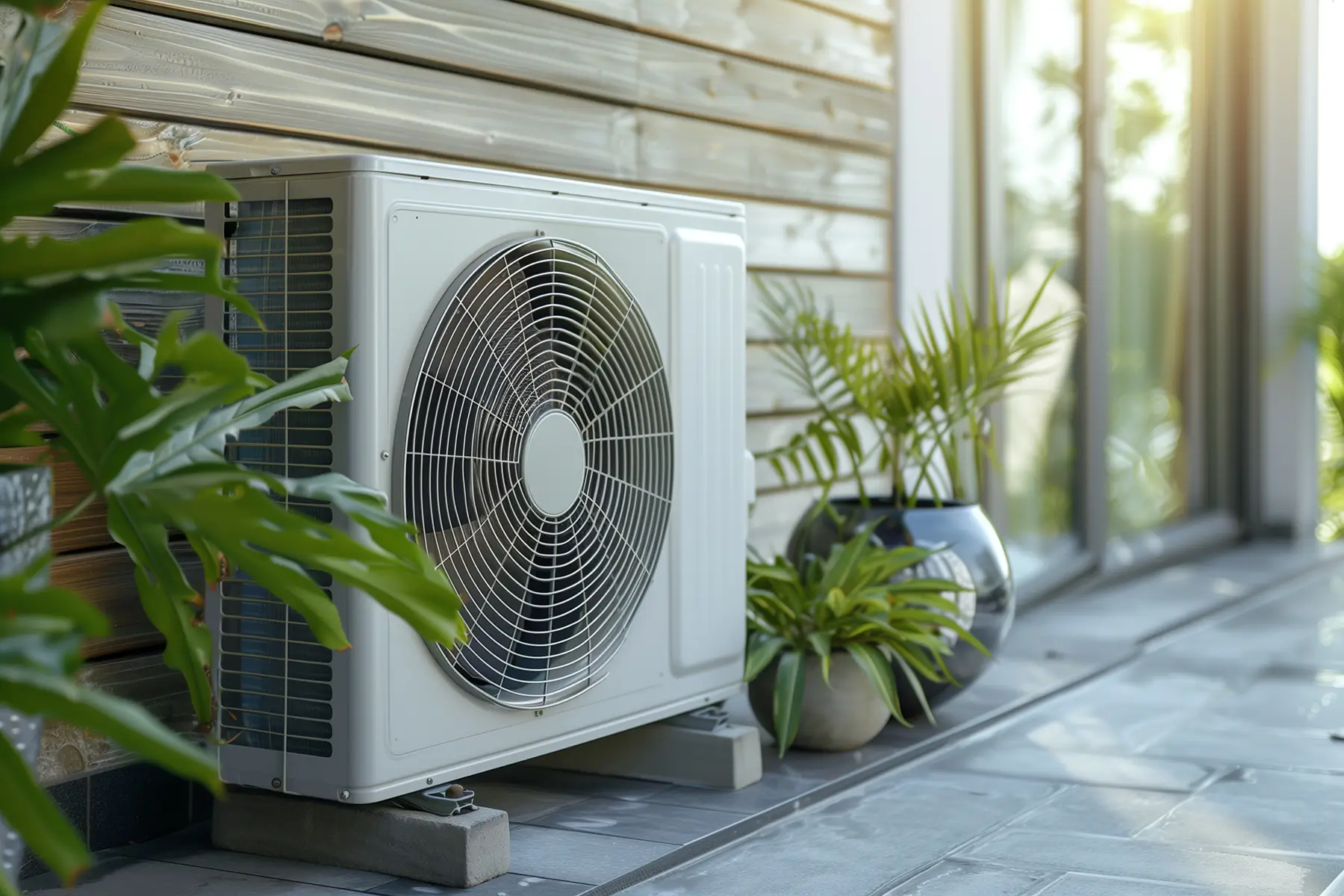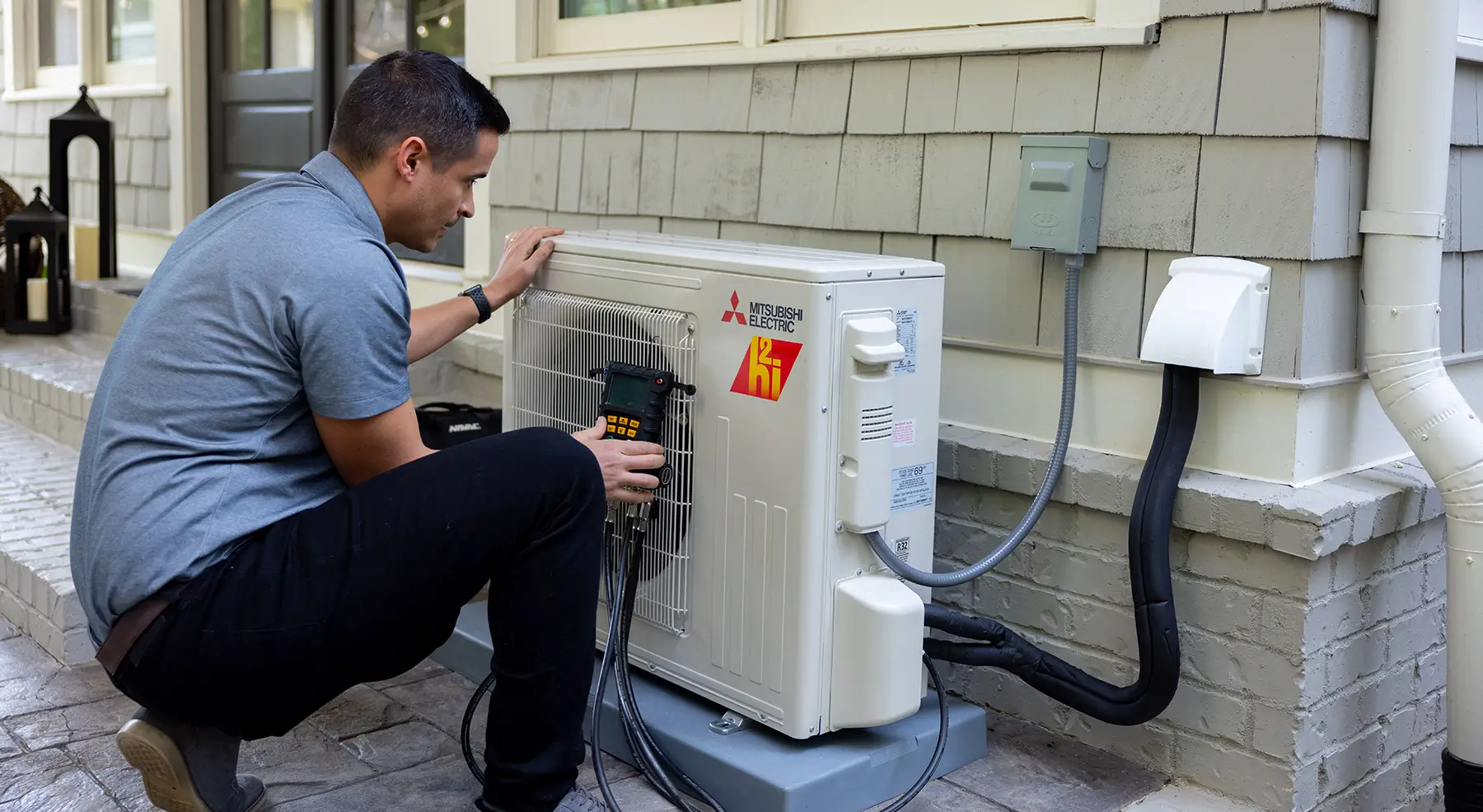Home heating is evolving, and the rise of tankless water heaters is central to this evolution. These innovative systems have become famous for homeowners seeking efficient and effective ways to provide hot water. Among the varieties available, two distinct types stand out: condensing and non-condensing tankless water heaters.
This distinction may only be apparent to some. For the average consumer, understanding the differences between these two types of water heaters is crucial, not just from an operational standpoint but also in terms of energy efficiency, cost implications, and environmental impact. Choosing between a condensing and a non-condensing tankless water heater can significantly influence a household’s energy consumption, long-term expenses, and comfort levels.
Table of Contents
What are Tankless Water Heaters?
Functioning of Tankless Water Heaters
How They Work: When a hot water tap is turned-on, cold-water travels through a pipe into the tankless water heater unit. An electric element or gas burner heats the water as it passes through, delivering a constant supply of hot water without the need for a storage tank.
Instantaneous Heating: These heaters provide two to five gallons of hot water per minute. Gas-fired tankless water heaters tend to produce higher flow rates than electric ones. However, even the largest models might need more hot water for simultaneous use across multiple outlets in larger households.
Benefits Over Traditional Tank Models
Energy Efficiency: Tankless water heaters are generally more energy-efficient than traditional tank models by heating water only on demand. This efficiency can translate into significant cost savings over time.
Space Savings: Without large storage tanks, tankless heaters are compact and can be installed in smaller spaces or even on walls, freeing up valuable floor space in homes.
Longer Lifespan: Typically, tankless water heaters have a longer operational life than tank models. They can last more than 20 years, compared to 10-15 years for traditional heaters. This longevity can offset the higher initial cost of the tankless system.
Consistent Hot Water Supply: They provide a continuous hot water supply, ideal for families and situations where hot water is in high demand.
Reduced Risk of Leaks and Water Damage: Without a tank, the risk of leaks and subsequent water damage is significantly lowered, which can be a significant advantage for long-term property maintenance.
Condensing Tankless Water Heaters
The Working Principle
Utilization of Exhaust Gases: In a condensing tankless water heater, the hot exhaust gases from the combustion process preheat the incoming cold water. This process occurs before the water reaches the primary heat exchanger.
Secondary Heat Exchanger: The defining feature of a condensing unit is the secondary heat exchanger. This component captures additional heat from the exhaust gases, usually lost in non-condensing heaters, to heat the water further.
Energy Efficiency: By using this additional heat, condensing water heaters can achieve higher efficiency levels, often exceeding 90%. This means less energy is wasted, utility bills are lowered, and environmental impact is reduced.
Key Features
High Efficiency: The main advantage of condensing water heaters is their high energy efficiency. They make better use of fuel sources, gas, or electricity.
Reduced Greenhouse Gas Emissions: These heaters contribute to lower greenhouse gas emissions than non-condensing models because of their efficiency.
Venting: Condensing units typically require PVC or other corrosion-resistant venting materials due to the acidic nature of the condensation.
Pros and Cons
Pros:
Energy Savings: The increased efficiency translates into significant energy and cost savings in the long run.
Environmentally Friendly: Less energy consumption means a smaller carbon footprint.
Flexibility in Venting Options: Due to cooler exhaust gases, they offer more flexibility in venting options and can often be vented through a sidewall.
Cons:
Higher Initial Cost: Condensing units are generally more expensive to purchase and install than non-condensing models.
Complexity and Maintenance: More complex components, like the secondary heat exchanger, require more maintenance.
In summary, condensing tankless water heaters offer a high-efficiency option for homeowners willing to invest more upfront for long-term savings and environmental benefits.
Non-Condensing Tankless Water Heaters
Functioning of Non-Condensing Water Heaters
Direct Heating Process: Non-condensing water heaters heat water directly without reusing the heat from exhaust gases. When a hot water tap is turned on, cold water is drawn into the unit and heated by a gas burner or electric element.
Single Heat Exchanger: Unlike condensing models, they use a single heat exchanger. The efficiency of these units typically ranges from 80-85%, which is lower than condensing models.
Hot Exhaust Gases: The exhaust gases in non-condensing water heaters are hot enough to require metal venting, usually stainless steel, which can withstand higher temperatures.
Key Features
Simplicity and Reliability: With fewer components and a more straightforward design, non-condensing water heaters are generally considered more reliable and easier to maintain.
Energy Usage: They are less efficient than condensing models but still more efficient than traditional tank water heaters.
Installation Considerations: Non-condensing units usually require less complicated and less expensive venting systems than condensing models, although the venting must be heat resistant.
Pros and Cons
Pros:
Lower Initial Cost: They are typically less expensive to purchase and install than condensing models, making them an attractive option for budget-conscious consumers.
Ease of Maintenance: The more straightforward design means easier and often less frequent maintenance.
Durability: With fewer components that can fail, non-condensing units are often considered more durable over the long term.
Cons:
Lower Efficiency: They are less efficient than condensing models, leading to higher operational costs.
Venting Requirements: The need for heat-resistant venting can limit installation options and may add to the installation cost.
Environmental Impact: Lower efficiency means higher greenhouse gas emissions than condensing models.
In summary, non-condensing tankless water heaters offer a more straightforward, cost-effective solution for immediate hot water needs. They may deliver a different efficiency than condensing models, but their simplicity, lower initial cost, and ease of maintenance make them suitable for many applications.
Comparison Between Condensing and Non-Condensing Tankless Water Heaters
Energy Efficiency
Condensing Heaters: With efficiencies exceeding 90%, condensing heaters are top performers. They extract more heat from combustion, resulting in less wasted energy.
Non-Condensing Heaters: Typically, these heaters have an 80-85% efficiency. While they are more efficient than traditional tank heaters, they fall short of the performance offered by condensing models.
Initial and Long-Term Costs
Condensing Heaters: They have a higher upfront cost due to their advanced technology. However, they can lead to significant savings on utility bills over time.
Non-Condensing Heaters: These are more affordable initially, making them a popular choice for those with a limited budget. However, the lower efficiency means higher operational costs in the long run.
Installation Considerations
Condensing Heaters: They require unique venting materials due to the acidic nature of the condensate they produce. Installation can be more complex and costly.
Non-Condensing Heaters: Installation is typically simpler and cheaper, but they require heat-resistant venting, which can sometimes limit installation options.
Maintenance and Lifespan
Condensing Heaters: They may require more frequent maintenance due to their complex design, including the secondary heat exchanger care. However, they generally have a longer lifespan.
Non-Condensing Heaters: Easier maintenance due to their more straightforward design, but they might have a shorter lifespan than condensing models.
Suitability for Different Homes
Condensing Heaters: Ideal for larger homes or regions with colder climates, as they can provide a more consistent hot water supply and are more efficient in long-term use.
Non-Condensing Heaters: Better suited for smaller homes or milder climates, where the demand for hot water is lower, making the most of their initial investment.
Environmental Impact
Condensing Heaters: Higher efficiency makes them more environmentally friendly, with lower greenhouse gas emissions.
Non-condensing heaters: They have a higher environmental impact due to lower efficiency and higher emissions.
In conclusion, choosing between condensing and non-condensing tankless water heaters depends on various factors, including budget, efficiency priorities, installation constraints, and environmental considerations. Consumers must weigh these factors against their specific needs and preferences to determine the best fit for their home.
Cost Analysis
Initial Investment
Condensing Heaters:
Purchase Price: Generally higher due to advanced technology.
Installation Costs: More expensive. It requires special venting and potentially a more complex installation.
Non-Condensing Heaters:
Purchase Price: Less expensive, making them more accessible for immediate budgets.
Installation Costs: Typically lower, with more straightforward installation and standard venting requirements.
Long-Term Cost Benefits
Condensing Heaters:
Energy Savings: Higher efficiency leads to significant savings on utility bills over the heater’s lifespan.
Durability: A longer lifespan means fewer replacements over time.
Non-Condensing Heaters:
Operational Costs: Higher ongoing costs due to lower efficiency.
Replacement Costs: May need replacing sooner than condensing models, leading to additional future costs.
Tax Credits and Rebates
Condensing Heaters: They are often eligible for tax credits and rebates due to their high efficiency and lower environmental impact.
Programs vary by location and can significantly offset the higher initial cost.
Non-Condensing Heaters: Less likely to qualify for incentives, although some programs might be available depending on the region and specific model efficiency.
Total Cost of Ownership
The total cost of ownership over the heater’s lifetime is a critical aspect to consider. While condensing tankless water heaters have a higher upfront cost, their lower operational costs and potential for tax credits can make them more cost-effective in the long run. Non-condensing models, though cheaper initially, may be more expensive due to higher energy bills and possible earlier replacement needs.
In conclusion, while the initial price tag is an important consideration, evaluating the overall cost of the water heater’s life can provide a more accurate picture of which option is more financially beneficial. The next section will examine heaters’ environmental impact and energy efficiency, offering insights into how these factors might influence the decision-making process for environmentally conscious consumers.
Environmental Impact and Energy Efficiency
In an era where environmental considerations are increasingly important, choosing between condensing and non-condensing tankless water heaters takes on additional significance. This section examines how these heaters compare their energy efficiency and environmental impact.
Energy Efficiency
Condensing Heaters:
Superior Efficiency: Condensing heaters achieve efficiency levels above 90% by capturing and reusing heat from exhaust gases. This means less energy is used to heat the same amount of water than non-condensing heaters.
Reduced Energy Consumption: The higher efficiency directly translates to lower energy consumption, making them an eco-friendlier choice.
Non-Condensing Heaters:
Moderate Efficiency: With efficiency ratings typically between 80-85%, they are less efficient than condensing models. They still offer an improvement over traditional tank heaters but use more energy than condensing units for the same amount of hot water.
Higher Energy Usage: This increased energy usage means a larger carbon footprint and a more significant environmental impact.
Carbon Footprint of Condensing Heaters:
Lower Emissions: The high-efficiency results in lower greenhouse gas emissions, contributing to a smaller carbon footprint.
Eco-Friendly Choice: For those looking to minimize their environmental impact, condensing heaters are preferable.
Carbon Footprint of Non-Condensing Heaters:
Higher Emissions: Due to their lower efficiency, they emit more greenhouse gases compared to condensing models.
Greater Environmental Impact: While better than traditional tank heaters, their environmental impact is higher than condensing heaters.
Relevance in Energy Conservation Efforts
Global and Local Initiatives: Many regions focus on reducing energy consumption and greenhouse gas emissions. Choosing a more energy-efficient water heater aligns with these broader conservation efforts.
Personal Contribution to Sustainability: For consumers who prioritize environmental stewardship, choosing a water heater becomes a part of their contribution to sustainability.
In conclusion, condensing tankless water heaters are more environmentally friendly and energy efficient. They align well with contemporary efforts to reduce energy consumption and carbon emissions. Non-condensing heaters, while less efficient, still represent a significant improvement over traditional tank heaters and might be the right choice for those with specific budget constraints or installation considerations.
Maintenance and Longevity
Maintenance Requirements of Condensing Heaters
Regular Maintenance: Due to their complex design, including secondary heat exchangers, condensing heaters often require more frequent maintenance to ensure optimal performance and prevent issues.
Specific Needs: Maintenance might include regular cleaning of the heat exchanger, checking the condensate drain, and ensuring clear venting pathways.
Maintenance Requirements of Non-Condensing Heaters
Simpler Maintenance: With a less complex design, non-condensing heaters typically have simpler and less frequent maintenance needs.
Basic Upkeep: Regular checks and cleaning are usually sufficient to keep these heaters running efficiently.
Expected Lifespan of Condensing Heaters
Longer Lifespan: Often, condensing models have a longer lifespan than non-condensing models, potentially lasting over 20 years with proper maintenance.
Durability: The extended lifespan can offset the higher initial cost and maintenance requirements.
Expected Lifespan of Non-Condensing Heaters
Moderate Lifespan: Although they may not last as long as condensing models, non-condensing heaters still significantly improve over traditional tank heaters, with lifespans often reaching 15-20 years.
Dependability: Their simpler design can contribute to reliable performance over their operational life.
Factors Influencing Longevity
Water Quality: Hard water or water with high mineral content can affect the efficiency and lifespan of both types of heaters, potentially requiring more frequent maintenance.
Usage Patterns: The amount and pattern of hot water usage in a household can influence the wear and tear on the heater, impacting its longevity.
Quality of Installation: Proper installation by a qualified professional is crucial for ensuring the longevity and efficiency of the heater.
In summary, while condensing tankless water heaters may require more maintenance, they generally offer a longer lifespan, making them a worthwhile investment for many homeowners. Non-condensing heaters, with their simpler maintenance and reliable performance, remain a compelling choice for those seeking a balance between upfront cost and long-term reliability.
Installation Considerations
Condensing Heaters Space Requirements
It is generally compact but may require additional space for the condensate drain system. Suitable for both indoor and outdoor installations, depending on the model.
Non-Condensing Heaters Space Requirements
Ventilation Needs of Condensing Heaters
Ventilation Needs of Non-Condensing Heaters
Professional Installation vs. DIY Potential
Both Heater Types:
It is strongly recommended to have professional installation, especially for gas-powered models, to ensure safety and compliance with local codes and regulations.
Electrical models offer some DIY potential, but understanding electrical systems and adherence to safety standards is crucial.
Additional Considerations
Local Building Codes: Compliance with local building codes and regulations is essential. These codes often dictate specifics about venting, placement, and other safety measures.
Gas Line Requirements: For gas-powered models, ensuring that existing gas lines are adequate to supply the heater is crucial. Upgrades to the gas line might be necessary.
Water Hardness: In areas with hard water, installing a water softener can extend the heater’s lifespan and maintain efficiency.
Cost of Installation: The overall cost can vary greatly depending on the complexity of the installation, type of heater, and local labor rates.
In conclusion, installing a tankless water heater, whether condensing or non-condensing, requires careful consideration of space, ventilation, and compliance with safety standards and local codes. Professional installation is generally recommended to ensure optimal performance and safety. The final section will offer advice on choosing the right model for your home, considering all the factors discussed in previous sections.
Choosing the Right Model for Your Home
Assessing Household Needs
Determine Hot Water Demand: Estimate your home’s peak hot water usage. Consider the number of bathrooms, kitchen usage, and appliances that require hot water.
Evaluate Existing Setup: Look at your current water heating system. Understand its capacity and how well it meets your needs to gauge what you require in a new system.
Calculating Requirements
Flow Rate: Calculate the flow rate (gallons per minute) needed by adding up the flow rates of all devices that could be used simultaneously.
Temperature Rise: Determine the temperature rise required by subtracting the incoming water temperature from your desired output temperature.
Budget Considerations
Upfront Costs vs. Long-Term Savings: Balance the initial investment against potential energy savings and operational costs over time.
Installation Costs: The cost of professional installation can vary based on the job’s complexity and local labor rates.
Climate and Home Size
Climate Impact: In colder climates, a more powerful heater may be necessary to achieve the desired rise in temperature.
Home Size and Layout: Larger homes or those with multiple floors may have different requirements in terms of flow rate and placement of the unit.
Environmental Priorities
Energy Efficiency: If reducing your carbon footprint is important, a condensing model might be the better choice due to its higher efficiency.
Sustainability Goals: Consider models with eco-friendly features and those that align with your sustainability objectives.
Brand and Model Research
Reputable Brands: Research and choose brands known for reliability and quality customer service.
Model Reviews and Ratings: Look for reviews and performance ratings of specific models to gauge customer satisfaction and performance.
Professional Consultation
Seek Expert Advice: Consult a professional to assess your home’s needs and installation considerations.
Customized Recommendations: A professional can provide recommendations tailored to your home’s layout, local climate, and your family’s usage patterns.
In conclusion, choosing the right tankless water heater involves a comprehensive evaluation of your household’s needs, budget, and environmental goals and a thorough understanding of the specific demands of such systems. Considering these factors and seeking professional advice, you can select a water heater that meets your immediate hot water needs and aligns with your long-term financial and environmental objectives.
Summary
Whether condensing or non-condensing, homeowners are faced with various considerations, this article has endeavored to provide a comprehensive guide to assist in this decision-making process, covering both heaters’ key differences, benefits, and drawbacks.
Recap of Key Points
Efficiency and Cost: Condensing tankless water heaters, with their higher efficiency and longer lifespan, offer significant energy savings over time, albeit with a higher initial investment. Non-condensing models, while less efficient, provide a more budget-friendly option with simpler maintenance requirements.
Environmental Impact: The choice between the two types reflects a household’s environmental priorities, with condensing models offering a greener footprint.
Installation and Maintenance: Installation considerations, such as space, venting requirements, and local building codes, are crucial in determining the right fit for your home. Additionally, understanding the maintenance needs helps ensure the heater’s longevity.
Tailored to Your Needs: The ultimate choice hinges on a balance of immediate budget constraints, long-term savings, household hot water demands, and personal environmental values.
Encouragement for Informed Decisions
The Bigger Picture
In an era where energy efficiency and sustainability are more important than ever, the choice of a water heater plays a small but significant role in the broader context of energy conservation and environmental stewardship. By choosing wisely, homeowners can contribute to a greener, more sustainable future while enjoying the practical benefits of an efficient, cost-effective water heating solution.
In conclusion, whether you opt for a condensing or non-condensing tankless water heater, the key is to choose one that best suits your specific needs, preferences, and circumstances. With the information provided in this article, consumers are better equipped to navigate the complexities of this important decision, ensuring satisfaction and comfort in their homes for years to come.




